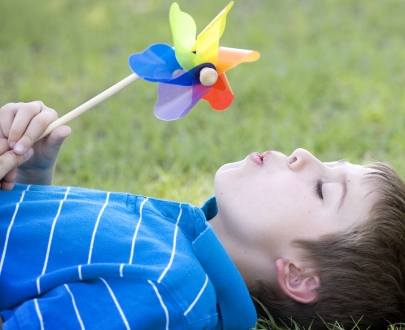 Born breathing, we are naturally equipped with an easy and accessible strategy for anxiety prevention, stress reduction, conflict resolution and self-regulation. Chances are, many people would benefit from a few lessons to use their breathing to its full potential. It is a powerful tool for young children to know how and when to "breathe."
Born breathing, we are naturally equipped with an easy and accessible strategy for anxiety prevention, stress reduction, conflict resolution and self-regulation. Chances are, many people would benefit from a few lessons to use their breathing to its full potential. It is a powerful tool for young children to know how and when to "breathe."
Breathing helps the brain! There are both physical and psychological benefits from deep, calm breaths. Take a moment now to slow down, breathe in through your nose and out through your mouth. Pay attention to your breaths. Deep, calm breaths can slow your heart rate, lower your blood pressure and even sharpen your focus. Breathing as part of an intentional strategy to be mindful has even been found to improve impulse control in teenagers[1] by giving time and space for a perspective check.
Sample some of the following ideas to introduce and practice calm breathing with children in your life:
For infants and toddlers:
In a relaxing embrace, a parent can hold young children belly to belly and talk or sing through the calming process of breathing in and out.
For young children:
Belly Breathing
- Lie down on the floor, place a small stuffed animal on your belly.
- Breath in through your nose and watch the animal rise as your belly fills with air.
- Breath out through your mouth and watch the animal go down as you belly goes flat.
Bubble Blowing
- Using a bubble want, practice slow, deep breathes that blow bubbles.
- After practice (and fun), blow imaginary bubbles without the wand.
Pinwheel Spinning
- With a pinwheel held in front of the child's face, instruct the child to take a deep, slow breath in.
- Hold the breath in for 2 seconds.
- Slowly release the breath by blowing the pinwheel.
- Repeat.
For older children and teens:
Belly Breathing
- Sit in a comfortable position with a hand on your belly.
- With your mouth closed and jaw relaxed, inhale through your nose. Allow your belly to expand.
- As you slowly exhale, imgaine the air emptying from your lungs and feel your belly flatten.
- Wait a few seconds before taking another breath.
- Do this 3-5 times.
Using Cues
- Before beginning breathing practice, have students visual a favourite scent that they associate with relaxation and positive feelings.
- Holding the feather in one hand, slowly take a deep breath and when exhaling, blow the feather up one side and down the other.
Students aged 14-18 participated in a youth empowerment seminar in which stress management techniques, focus and emotional regulation were taught. Compared with the control group, participants reported less impulsive behaviour after the program.